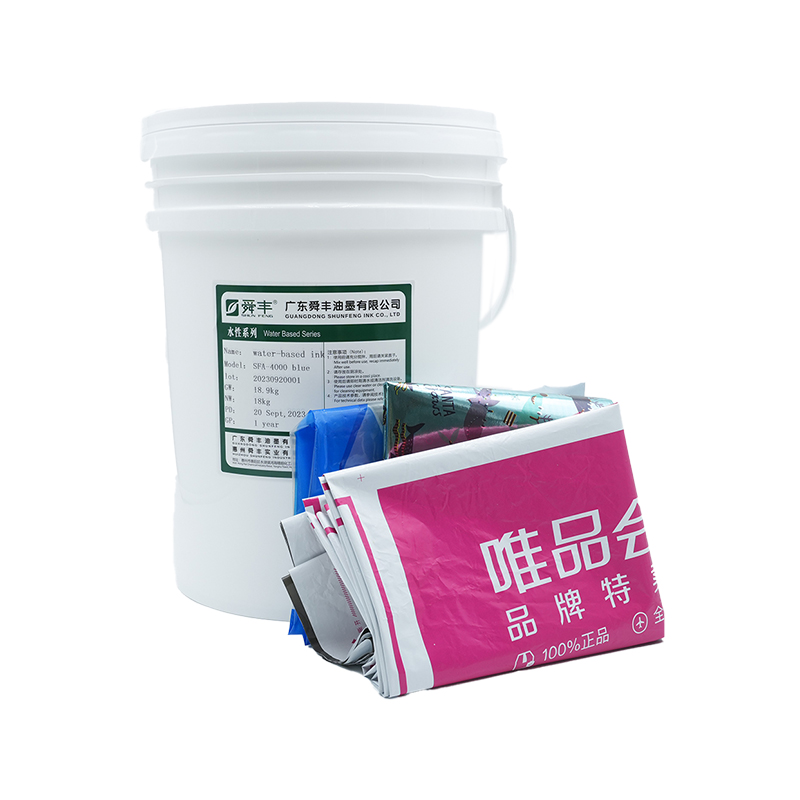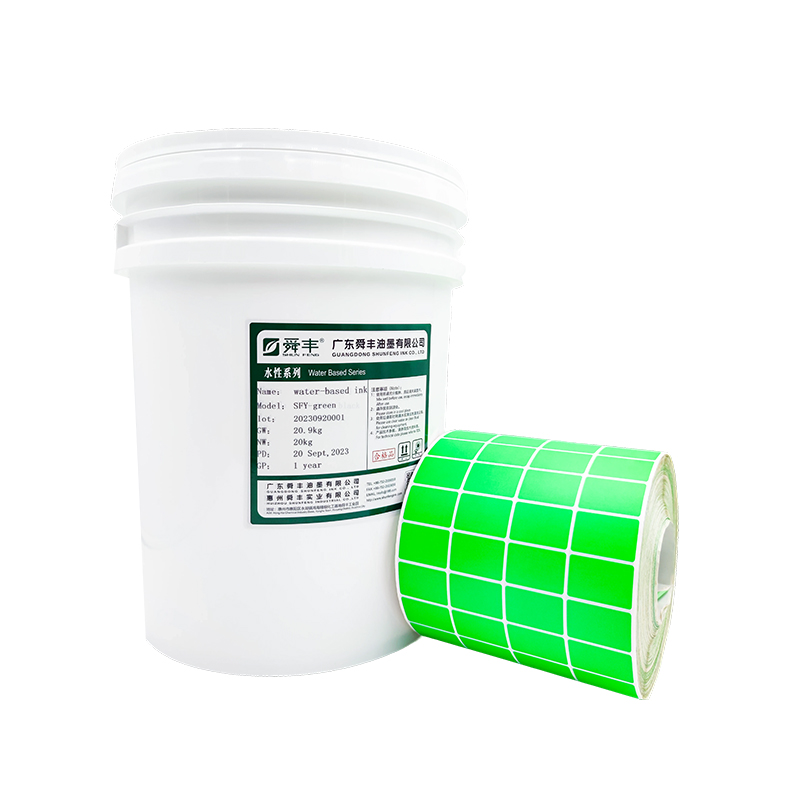Can a general-purpose, economical offset UV ink balance cost, efficiency, and print quality?
Release Time : 2025-11-12
In the commercial printing industry's continuous pursuit of high efficiency, short lead times, and differentiated effects, UV curing technology has become a crucial direction for the upgrading of offset printing processes. General-purpose, economical offset UV ink, as a key product balancing performance and cost, is helping small and medium-sized printing companies enter the UV printing era with a lower barrier to entry due to its rapid curing, wide compatibility, and stable output. It is not just an ink, but a practical bridge connecting traditional offset printing equipment with modern green and efficient production models.
The core advantage of general-purpose, economical offset UV ink lies in its wide compatibility and immediate usability. No large-scale modifications to existing mainstream offset printing presses such as Heidelberg, Roland, and Komori are required; simply adding a UV curing lamp allows for multi-category printing, from standard four-color to spot color, from coated paper to synthetic paper, and from labels to packaging. Its optimized formula is suitable for regular PS plates or pre-treated CTP plates, and has a high tolerance for dampening solution pH and alcohol concentration, significantly reducing operational complexity and trial-and-error costs. This "low-modification, quick-switchover" characteristic allows SMEs to flexibly accept high-value-added UV orders without interrupting their production schedules.
While positioned as "economical" in terms of performance, this type of ink does not sacrifice key performance indicators. Utilizing a highly reactive monomer and oligomer system, combined with a highly efficient photoinitiator, it can cure within 0.1 seconds under 380–420nm wavelength UV light irradiation, achieving an integrated "printing-curing-stacking" process, completely eliminating the need for drying and powder coating required by traditional inks. The cured ink film exhibits high hardness and abrasion resistance, suitable for post-processing requiring lamination, hot stamping, or die-cutting; it also possesses excellent dot reproduction and color saturation, with stable solid density, meeting the visual requirements of mainstream commercial products such as brochures, packaging, and flyers.
Environmental protection and safety are also incorporated into the basic design. General-purpose economical UV inks are typically 100% solids-content systems, free of volatile organic solvents (VOCs), eliminating the emission of harmful substances such as benzene and ketones at the source, and complying with GB 38507-2019 "Limits of Volatile Organic Compounds in Inks" and EU REACH regulations. Some products further utilize low-migration formulations, suitable for indirect printing on food contact packaging, expanding application boundaries. They are odorless and low-irritant during operation, improving the workshop working environment.
Cost control truly reflects their "economical" positioning. Using mature and stable domestic resin and pigment systems, the raw materials are significantly cheaper than high-end imported UV inks while ensuring batch consistency. Simultaneously, because there is no need for powder spraying, reducing scrap rates and improving start-up efficiency, the overall production cost is actually lower. One kilogram of ink can print a larger area, resulting in outstanding unit cost efficiency, making it particularly suitable for small-to-medium batch, multi-variety fast printing businesses.
Furthermore, this ink possesses good storage stability and anti-emulsification capabilities, maintaining stable rheological properties even under fluctuating temperature and humidity environments, reducing ghosting, smearing, or poor drying problems during the printing process. Matching cleaning agents are also trending towards water-based or low-toxicity formulations, reducing maintenance costs and environmental burden.
In conclusion, the general-purpose, economical offset UV ink is not a product of performance compromise, but rather a pragmatic innovation precisely matching market demands. It unlocks the efficiency benefits of UV printing at a reasonable cost, supports commercial delivery with stable quality, and aligns with regulatory trends with its green attributes. When a UV-printed product is quickly stacked on the delivery table, beneath its mirror-like surface lies the robust balance this ink has achieved between cost and performance—it may not be flashy, but it is genuinely driving the Chinese printing industry steadily towards a more efficient, cleaner, and sustainable future.
The core advantage of general-purpose, economical offset UV ink lies in its wide compatibility and immediate usability. No large-scale modifications to existing mainstream offset printing presses such as Heidelberg, Roland, and Komori are required; simply adding a UV curing lamp allows for multi-category printing, from standard four-color to spot color, from coated paper to synthetic paper, and from labels to packaging. Its optimized formula is suitable for regular PS plates or pre-treated CTP plates, and has a high tolerance for dampening solution pH and alcohol concentration, significantly reducing operational complexity and trial-and-error costs. This "low-modification, quick-switchover" characteristic allows SMEs to flexibly accept high-value-added UV orders without interrupting their production schedules.
While positioned as "economical" in terms of performance, this type of ink does not sacrifice key performance indicators. Utilizing a highly reactive monomer and oligomer system, combined with a highly efficient photoinitiator, it can cure within 0.1 seconds under 380–420nm wavelength UV light irradiation, achieving an integrated "printing-curing-stacking" process, completely eliminating the need for drying and powder coating required by traditional inks. The cured ink film exhibits high hardness and abrasion resistance, suitable for post-processing requiring lamination, hot stamping, or die-cutting; it also possesses excellent dot reproduction and color saturation, with stable solid density, meeting the visual requirements of mainstream commercial products such as brochures, packaging, and flyers.
Environmental protection and safety are also incorporated into the basic design. General-purpose economical UV inks are typically 100% solids-content systems, free of volatile organic solvents (VOCs), eliminating the emission of harmful substances such as benzene and ketones at the source, and complying with GB 38507-2019 "Limits of Volatile Organic Compounds in Inks" and EU REACH regulations. Some products further utilize low-migration formulations, suitable for indirect printing on food contact packaging, expanding application boundaries. They are odorless and low-irritant during operation, improving the workshop working environment.
Cost control truly reflects their "economical" positioning. Using mature and stable domestic resin and pigment systems, the raw materials are significantly cheaper than high-end imported UV inks while ensuring batch consistency. Simultaneously, because there is no need for powder spraying, reducing scrap rates and improving start-up efficiency, the overall production cost is actually lower. One kilogram of ink can print a larger area, resulting in outstanding unit cost efficiency, making it particularly suitable for small-to-medium batch, multi-variety fast printing businesses.
Furthermore, this ink possesses good storage stability and anti-emulsification capabilities, maintaining stable rheological properties even under fluctuating temperature and humidity environments, reducing ghosting, smearing, or poor drying problems during the printing process. Matching cleaning agents are also trending towards water-based or low-toxicity formulations, reducing maintenance costs and environmental burden.
In conclusion, the general-purpose, economical offset UV ink is not a product of performance compromise, but rather a pragmatic innovation precisely matching market demands. It unlocks the efficiency benefits of UV printing at a reasonable cost, supports commercial delivery with stable quality, and aligns with regulatory trends with its green attributes. When a UV-printed product is quickly stacked on the delivery table, beneath its mirror-like surface lies the robust balance this ink has achieved between cost and performance—it may not be flashy, but it is genuinely driving the Chinese printing industry steadily towards a more efficient, cleaner, and sustainable future.







